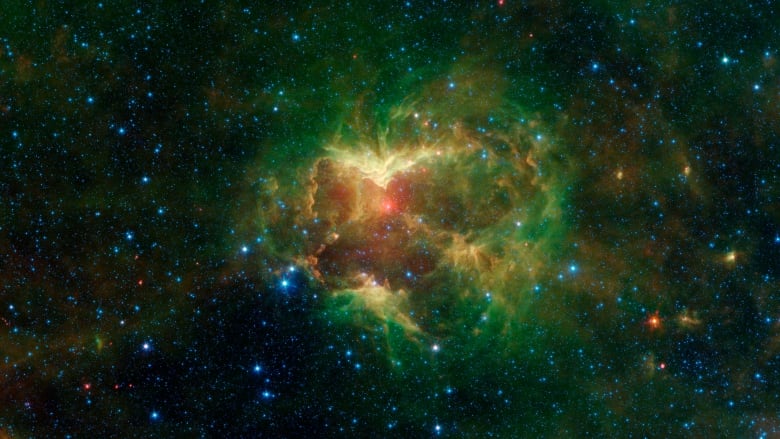One big eye on the sky closes, but bigger one is on the way

After more than a decade and a half of scanning the skies, the Spitzer Space Telescope has been shut down for good. On January 30 the telescope was put in safe mode and ceased operation. Meanwhile, a much larger successor is being readied for launch.
The Spitzer Space Telescope is not as famous as its cousin Hubble, but it discovered aspects of the universe invisible to other telescopes because its instruments were tuned to infrared light. Many telescopes, including Hubble, see primarily in visible light, which is one reason Hubble pictures are so popular with the public. They show astronomical objects as they might appear to us (if our eyes were huge, super-sensitive and in orbit.)
Spitzer saw the universe through infrared light, basically seeing heat (you may have seen infrared pictures of people where their faces glow brightly while hair and clothing are much darker). To do this, its instruments were super-cooled; it was placed in an orbit that kept it far away from the glow of Earth; and it had a shield that protected it from the heat of the sun.
All this gave it the ability to see objects in the universe essentially by temperature instead of visible light, which reveals objects that are relatively cool and thus dark in visible light. This included the dust clouds that drift between the stars, and disks around stars that give birth to new planets. It was also able to see deeper into dust clouds that normally block the view of other telescopes.
The Spitzer telescope was named after astronomer Lyman Spitzer Jr., who was first to suggest placing telescopes in space to get a clearer view of the universe high above the Earth’s shimmering atmosphere. It was one of four great space-based observatories that included Hubble, the Chandra X-Ray Observatory, and the Compton Gamma Ray Observatory. Each telescope gave us a different view of the universe, which when combined, filled out details that are far beyond what the eye can see.
Only Chandra and Hubble are still operating.
Launched in 2003, the Spitzer mission was designed to run for two-and-a-half years. But like many spacecraft, it lasted far beyond its base mission. Its cryogenic coolant ran out in 2009, then it began it’s “warm” phase, where scientists found that the telescope was still very good at studying planets going around other stars.
One of its targets was the Trappist 1 system, with seven Earth-sized planets, three of them in the habitable zone where liquid water could exist on their surfaces.

During its extended life of more than a decade, Spitzer was even able to study the atmospheres of exoplanets, basically giving us weather reports on alien worlds.
Now that Spitzer has been shut down, its successor, the James Webb Space Telescope is being prepared for launch. This project includes participation from the U.S., Europe and Canada. It involves a 6.5-metre mirror that is so big it had to be built in segments that fold up to fit into the nose-cone of a launch vehicle.
Webb will also see infrared but with a sensitivity that will enable it to peer further into the depths of the universe and further back in time toward the Big Bang than ever before.
Unfortunately, a recent report from the U.S. Government Accountability Department found that the the long-delayed and seriously over-budget Webb may be delayed once again, possibly missing its planned March 2021 launch date. Since development of the telescope began in 1996, the launch date has been pushed back several times and the budget has doubled to $9.7 billion. But whenever Webb does get off the ground and becomes operational, we will have the biggest, most powerful eye on the sky ever launched into space.
Every new type of telescope adds to our ever-expanding knowledge of this incredibly complex universe we live in.
Galileo was the first to point an instrument at the sky, and saw mountains on the moon, other moons orbiting Jupiter, and the sky went from being the domain of mythological creatures into the home of real worlds. As instruments grew larger, astronomers such as Edwin Hubble refined our cosmic address, showing that we live in just one of billions of galaxies spread across an ever-expanding universe. Radio astronomy revealed some of the most violent events, such as supernova and spinning neutron stars. Other instruments have seen the remnants of the big bang itself.
Who knows what we will see next?





